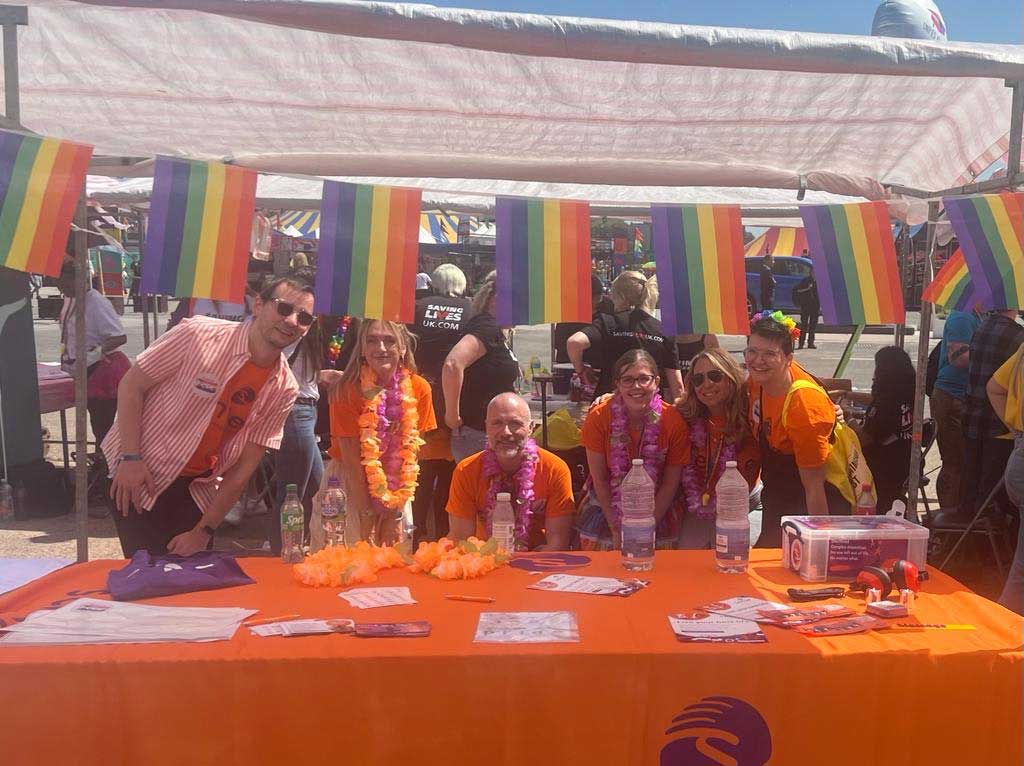Sense of Pride: at Sense, LGBT+ inclusion is about more than rainbow flags
Michael, who leads communications at Sense, tells us about how we are marking Pride in this blog.

Pride is now an institution and a global celebration that practically everyone wants to be a part of – and if I’m being honest I have mixed emotions about that.
I grew up gay in the 1980s. The world was not a welcoming place for the LGBT+ community then; much has changed, though it’s far from perfect. My first Pride marches in London were more home-made affairs and there was often open hostility from the police and the public.
I remember marching round Parliament Square and a drag queen dressed as Margaret Thatcher was waving us on from a soapbox. It was a moment of hilarity but with a serious point. The law was not on our side.
Back then there was not a hope in hell of major companies displaying rainbows. But what we achieved was a sense of belonging in a community. So many of us were (and still are) made to feel ashamed of who we are by society, by the media, by the law – so to march through London and be proud to be ourselves felt incredible.
Now it’s still incredible and it’s pretty much standard for social media icons to get a rainbow treatment for Pride. Practically every supermarket, estate agent and bank will have a Pride display. On one level this is brilliant. It’s a public demonstration of acceptance and allyship. And I’ll take that as a win any day!
But it makes me uncomfortable to see some organisations talking about and celebrating Pride in a way that feels tokenistic.
Sense of Pride
So, when it came to marking Pride at Sense – I needed to step up! For me, it was vital we connected the work of Sense and the community we exist to support with Pride to avoid any feeling of rainbow-washing.
Sense does amazing work supporting people with complex disabilities around relationships and sexuality. As Tracy, our wonderful sexuality and relationships adviser puts it:
“The taboo around sexuality for disabled people is lifting. It’s now recognised that, like anyone else, people with complex disabilities have a basic human right to loving and intimate relationships, and to express their sexuality and their identity.”
There is a natural cross-over here with Pride – so we use Pride month to tell the story of our work in this area. We also use our social media and blog to platform some stories from queer deafblind and disabled people. Connor has talked about his experiences as a transgender blind man and Max told the story of their life as a deafblind drag king.
Working at Sense
I lead on communications and campaigns at Sense. So much of our work is about belonging. Thousands of people with complex disabilities, and those who are deafblind, are still missing out on the vital support they need – and we strive as a charity to make sure that everyone should be able to take part in life.
And I can relate to that. People say cruel and thoughtless things to parents to disabled children. And with the right support and opportunities, deafblind people can defy expectations just like anyone else.
A sense of belonging
As well as the day job, I’m chair of the LGBT+ staff and volunteer network at Sense. We also run ethnic minority, disability and wellbeing and mental health networks. It’s an important way to make sure everyone feels part of the team at Sense.
Last year we launched our trans policy so we can support and empower any colleagues who are trans or transitioning. And the year before, we launched our equality, diversity and inclusion strategy.
Job done you may think! Not so fast – it’s a journey we’re on and I’m proud that Sense has made that commitment. We still have a lot to learn, but we’re making progress.
We celebrate Pride at Sense. But it’s not about waving a rainbow flag for a month. It’s rooting Pride in the work we do and the people we exist to support.

